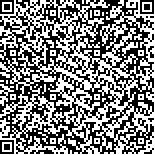| 摘要: |
| [摘要] 目的 探讨外周血造血干细胞在体外转化为肝样干细胞的诱导条件。方法 选取自愿行造血干细胞移植符合入选标准患者,用血细胞分离机采集经粒细胞集落刺激因子(recombinant human granulocyte-colony stimulating factor,G-CSF)+化疗药物动员后患者的外周血单个核细胞,通过流式细胞仪及免疫磁珠法筛选出CD34+的单个核细胞。将CD34+的单个核细胞分为对照组、肝细胞生长因子(hepatic growth factor,HGF)组、成纤维细胞生长因子4(fibroblast growth factor,FGF4)组、FGF4+HGF组、HGF+FGF4+巨噬细胞集落刺激因子(macrophage colony stimulating factor,MCSF)组。动态观察细胞形态学变化,15 d后免疫细胞化学检测Oct4、ALB、AFP、c-Kit、CK19及CD34在各组细胞中的表达。结果 HGF+FGF4+MCSF组:见大量类圆形细胞,贴壁生长,核仁明显,核质比例大,部分细胞串珠样生长;FGF4+HGF组:见少量类圆形细胞,余细胞形变明显;对照组、HGF组、FGF4组:仅个别细胞呈类圆形,大部分死亡。HGF+FGF4+MCSF组:Oct4、c-Kit、CK19、CD34阳性表达,AFP弱阳性,ALB阴性;FGF4+HGF组:细胞AFP、ALB阳性表达,CK19、CD34弱阳性表达,Oct4、c-Kit阴性;对照组、HGF组、FGF4组:检测指标均无表达。结论 经HGF、FGF4及MCSF联合诱导后的外周血CD34+单个核细胞更易转化为肝样干细胞。 |
| 关键词: 外周血干细胞 肝样干细胞 诱导分化 |
| DOI:10.3969/j.issn.1674-3806.2018.10.01 |
| 分类号:R 329.24 |
| 基金项目:国家自然科学基金项目(编号:81260352);广西消化疾病临床医学研究中心建设项目(编号:桂科AD17129027) |
|
| Study on the transformation of peripheral blood stem cells into hepatic stem cell-like cells |
|
HAN Ya-min, YIN Wu, MO Ming-zheng, et al.
|
|
Department of Gastrointestinal Surgery, the People′s Hospital of Guangxi Zhuang Autonomous Region, Nanning 530021, China
|
| Abstract: |
| [Abstract] Objective To investigate the optimal conditions for the differentiation of peripheral blood hematopoietic stem cells into hepatic stem cell-like cells in vitro. Methods The patients with autologous peripheral blood stem cell transplantation in our hospital were selected as the research objects. The patients′ peripheral blood mononuclear cells after the mobilization with rhG-CSF(recombinant human granulocyte-colony stimulating factor)+chemotherapeutic drugs were collected by blood cell separator, and the levels of CD34+ were detected by flow cytometry, and the CD34+ cells were purified. The CD34+ cells were divided into 5 groups: control group, HGF(hepatic growth factor) group, FGF4 (fibroblast growth factor) group, FGF4+HGF group and HGF+FGF4+MCSF(recombinant human macrophage colony stimulating factor) group. The morphological changes of cells were observed dynamically. The expressions of Oct4, ALB, AFP, c-Kit, CK19 and CD34 were detected with immunofluorescence to identify the characters of the differentiated cells after the cells were cultured for 15 days. Results In the HGF+FGF4+MCSF group: a large number of round cells, adherent growth, nucleolus obvious, large proportion of nucleus to cytoplasm, part of the cell bead-like growth. In the FGF4+HGF group: a small number of round cells, others deformed significantly. In the control group, HGF group and FGF4 group: except for individual round cells, most cells died. In the HGF+FGF4+MCSF group: positive expressions in Oct4, c-Kit, CK19 and CD34, weak positive expression in AFP and negative expression in ALB. In the FGF4+HGF group: positive expressions in AFP and ALB, weak positive expressions in CK19 and CD34, and negative expressions in Oct4 and c-Kit. In the control group, HGF group and FGF4 group: all of the above indicators were not expressed. Conclusion The combination of HGF, FGF4 and MCSF shows obvious advantages in inducing peripheral blood stem cells to differentiate into hepatic stem cell-like cells. |
| Key words: Peripheral blood stem cell Hepatic stem cell-like cells Induction differentiation |

